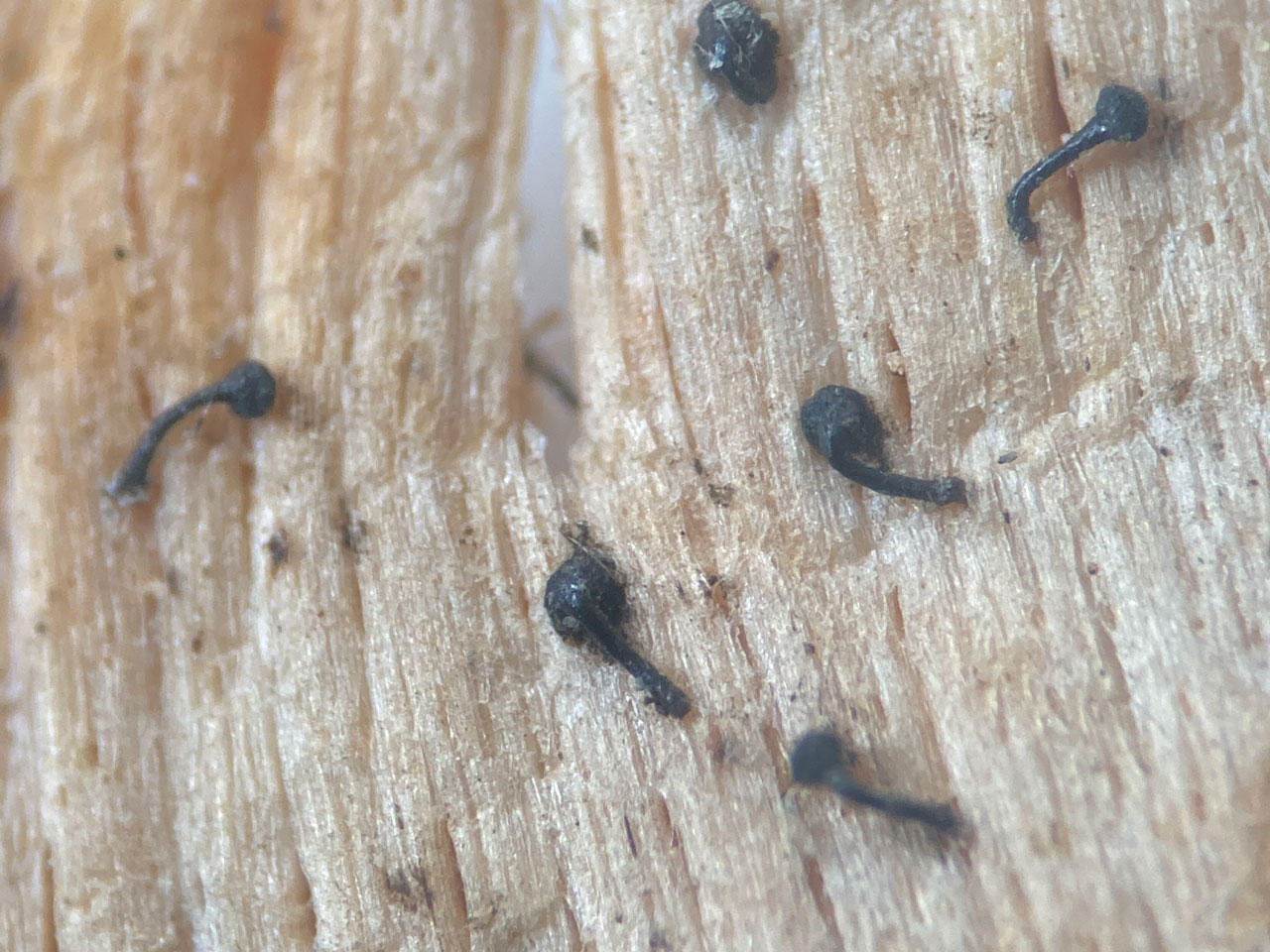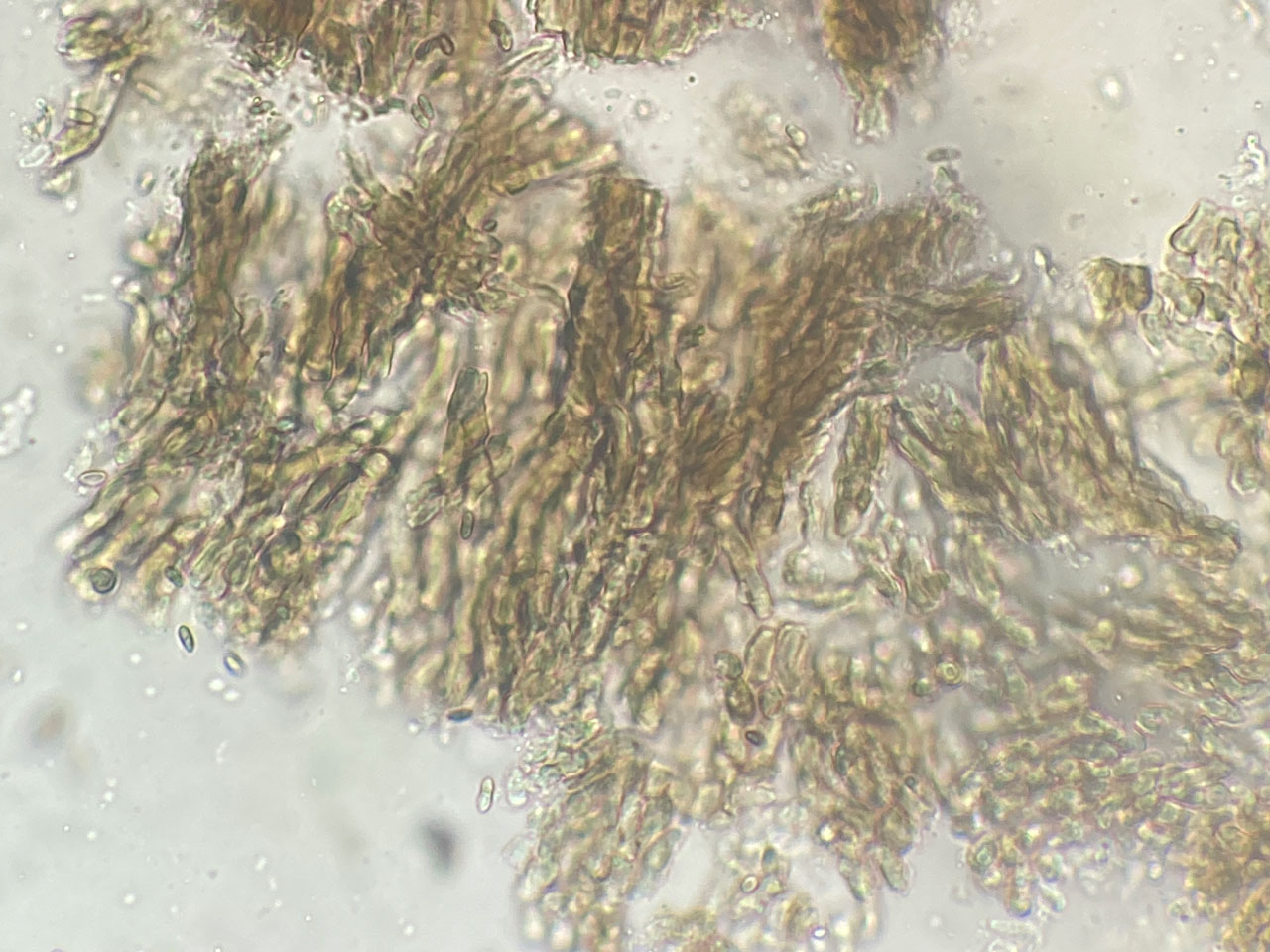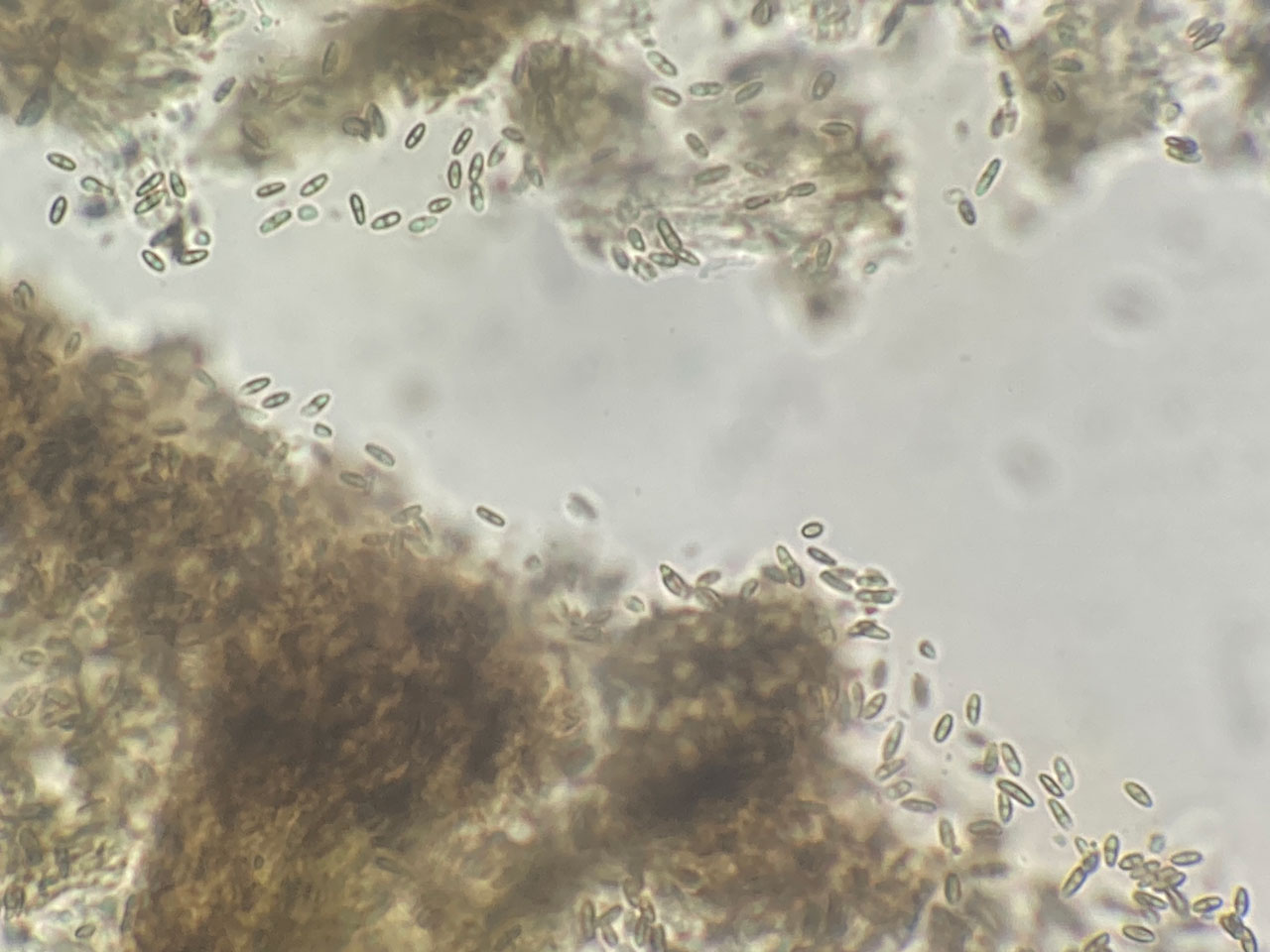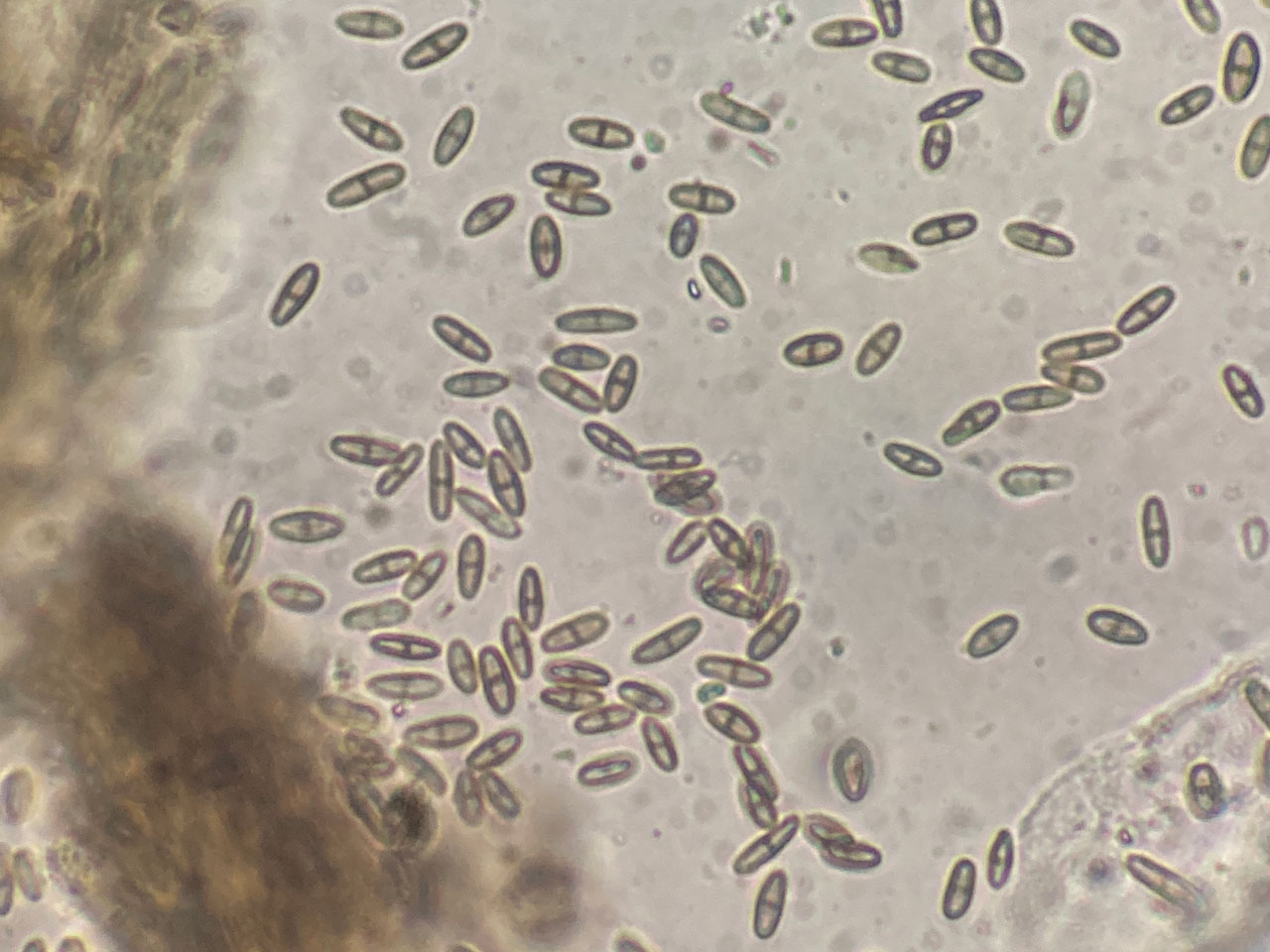Chaenothecopsis tasmanica
This taxa has been known from bark of old Oaks and decorticate or hollowed trunks of Pine, Alder and Oak in old growth woodland in the eastern Highlands of Scotland under the herbarium name Chaenothecopsis species F. Recently identified as Chaenothecopsis tasmanica, which is found widely in humid temperate areas of both hemispheres. Similar to C. nigra in its dark septate spores but that species shorter ascospores (5–6 µm in length) which are pale grey-brown, with the cell walls distinctly paler than the septa, while C. tasmanica has longer ascospores (6–7.5 µm) which are darker brown, with darked cell walls.
Apothecia 0.5–0.7 mm tall, black; head 0.2–0.3 mm diam., lenticular to hemispherical; epithecium reddish brown, hypothecium pale to medium brown; stalk 0.04–0.07 mm diam., black to brown, shining, outer hyphae interwoven and reddish to greenish brown sclerotized, stem hyphae swelling in K. Epithecium, hypothecium and stalk K+ yellowish to reddish brown. Ascospores 6–7.5 × 2–3 µm, 1-septate, medium brown, ellipsoidal, the septum dark as or slightly darker than the spore walls.
Similar to C. nigra in its dark septate spores, but that species has shorter ascospores (5–6 µm in length) which are pale grey-brown, with the cell walls distinctly paler than the septa and the stalk has periclinally arranged hyphae.
On dry Oak bark, and on wood of decorticate or hollowed trunks of Pine, Alder and Oak in old growth woodland. Elsewhere, it additionally has been recorded as a parasite of Chaenotheca (Tibell 1998).

In the eastern Highlands of Scotland.
Not Evaluated but certainly a Notable species and potentially threatened.
Sanderson, A., Cannon, P., Coppins, B., & Simkin, J. (2025). Mycocaliciales: Sphinctrinaceae, including Chaenothecopsis, Mycocalicium, Phaeocalicium, Sphinctrina and Stenocybe. Revisions of British and Irish Lichens 52: 1–15.
Tibell, L. (1998). Crustose mazaediate lichens and the Mycocaliciacea in temperate South America. Bibliotheca Lichenologica 71: 62–89.
Text by Neil A Sanderson based on Sanderson et al (2025)



